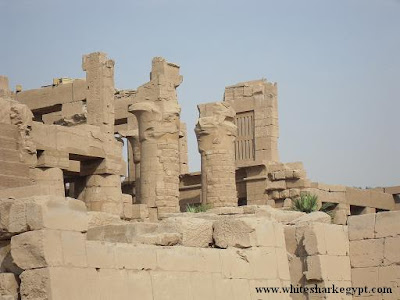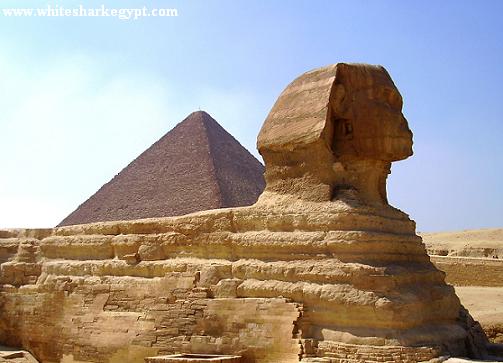One Day Trip to Luxor from Hurghada
Reaching Luxor, we will first of all make a short stop en route to have a look at the 3,400 years old Colossi of Memnon, the gigantic statues of Pharaoh Amenhotep III who were once standing guard in front of his no longer existing memorial temple complex that had been even larger than the Temple of Karnak.
After this stop we will show you the Valley of
the Kings where during a period of 500 years the ancient Egyptians
buried their kings and powerful nobles and where the mummies of some of the
most famous and glamorous persons of the Pharaonic time were found. Beginning
with the 18th Dynasty and ending with the 20th, the kings abandoned the Memphis
area and built their tombs in Thebes. You can descend to the tombs of great
Egyptian rulers and discover the well preserved colourful paintings and
hieroglyphic stories on the walls. The king's formal names and titles are
inscribed in his tomb along with his images.
Now we are ready for another highlight – the Temple of Queen
Hatshepsut who was one of the most fascinating rulers of ancient Egypt,
a female Pharaoh who proved her ability to successfully reign over an empire
and finally created for herself an architectonically extraordinary mortuary
temple with colonnaded terraces, a hypostyle hall and lots of statues,
paintings and reliefs. A tree lined avenue of sphinxes lead up to the temple,
and ramps lead you from terrace to terrace. The porticos and colourings on the
lowest terrace are out of all proportion to what can be seen in the rest of the
building. They were restored in 1906 to protect the celebrated reliefs
depicting the transport of obelisks to Karnak and the birth of Queen
Hatshepsut. Reliefs on the south side of the middle terrace show the queen's
expedition to the Land of Punt, the land of incense.
After enjoying lunch in a local restaurant you will see the Temple of
Karnak, for sure one of the most extraordinary temples - maybe no site
in Egypt is more impressive than Karnak. It
is the largest temple complex ever built by human beings and represents the
combined achievements of many generations of ancient builders. The Temple
of Karnak consists actually of three main temples, smaller
enclosed temples and several outer temples located about 3 kilometres north of Luxor
on 100ha (247 acres) of land. After thousands of years it is still in an
amazingly good state – so with a bit of imagination you will find yourself
easily back in the past of this impressive sacral monument. You will have a lot
of time to stroll around, explore the entrance area where you get an impression
of how the immense pylon was built, walk through the avenue of ram-headed
criosphinges, discover the hypostyle hall with its more than one hundred huge
well preserved pillars, admire the hieroglyphs and paintings, see the holy lake
and have a look at the various chapels, temples and statues. And if you like,
approach the holy scarab close to the lake and surround it three times
clockwise – according to the legend, offspring will follow soon…!
For more information, or to book this trip, please see the follwing link:




Comments
Post a Comment